There is a lot of love out there for the Swiss K31 rifle. A surplus darling, it’s inexpensive and very accurate. But there were quite a few other Swiss straight pull rifles. So let’s quickly cover them.
Rifle Model 1889

| Cartridge | GP90 | Length | 51.3″ | Barrel Length | 30.7″ | Weight | 10.7 lb |
|---|
The 1889 is the original Swiss straight pull and features an easily recognized, large, 12-round box magazine. While these can be wormed out they are not supposed to be detachable. The lever on the right side is a magazine cut off and many have a metal clip over them after 1898 to leave them in the “off” position to avoid confusion in the field. The 1889 is the only Schmidt-Rubin featuring locking lugs on the rear of the bolt body.
Mannlicher Cavalry Carbine M1893

| Cartridge | GP90 | Length | 40″ | Barrel Length | 21.7″ | Weight | 6.8 lb |
|---|
There were already concerns with the Model 1889 action’s weaknesses and its extreme length made modification to a carbine unfeasible. So the Swiss licensed the production of a modification of the Steyr-Mannlicher M1890 carbine. This featured a straight pull bolt of different operation from the Schmidt-Rubin, detachable box magazine, and handy size. Not many were made and attrition was high, so these are very uncommon.
Rifle Model 1889/96
| Cartridge | GP90 | Length | 51.2″ | Barrel Length | 30.7″ | Weight | 9.9 lb |
|---|
Early concerns with the Model 1889 were turned over to a Colonel Vogelsang, who went to work making the necessary changes to move the locking lugs from the rear of the bolt sleeve toward the front. This seemingly small change caused a cascade of considerations, resulting in a new model of rifle, externally quite similar to the original. The 1896 rifles were later updated to the 1911 pattern, making originals very rare.
Short Rifle Model 1889/1900

| Cartridge | GP90 | Length | 43.5″ | Barrel Length | 23.3″ | Weight | 7.9 lb |
|---|
Replacing the unsatisfactory Model 1893 Carbine, this short rifle was intended for artillery, communications, and other rear echelon troops. It is built from the Model 1896 action, despite having 1889 in its title. It features a smaller, 6-round detachable box magazine in order to improve prone shooting and overall handling. Pure 1889/1900 rifles are extremely rare as almost all were converted to the later 00/11 pattern.
Cavalry Carbine Model 1905

| Cartridge | GP90/03 | Length | 42.1″ | Barrel Length | 21.6″ | Weight | 7.9 lb |
|---|
Also replacing the Model 1893, the Model 1905 was intended for cavalry use and did not have a provision for a bayonet. It features a smaller, 6-round detachable box magazine in order to improve prone shooting and overall handling. Pure 1889/1900 rifles are extremely rare as almost all were converted to the later 00/11 pattern.
Rifle Model 1911
| Cartridge | GP11 | Length | 51.6″ | Barrel Length | 30.7″ | Weight | 10.3 lb |
|---|
The Model 1911 was developed for the improved GP11 cartridge and features improved sights. It did away with the magazine cut off and was paired with the same pattern 6-round magazine as the 1900 and 1905.
Carbine Model 1911
| Cartridge | GP11 | Length | 43.4″ | Barrel Length | 23.3″ | Weight | 8.9 lb |
|---|
This K11 carbine was produced along with the new 1911 rifle. It replaced both the 1900 and 1905 carbines in service. Ultimately the utility of the K11 was recognized and it became the lone standard rifle after halting 1911 long rifle production. It can quickly be identified from the later K31 by its slanted 6-round detachable box magazine set several inches in front of the trigger guard.
Rifle Model 1896/11
| Cartridge | GP11 | Length | 51.3″ | Barrel Length | 30.7″ | Weight | 9.9 lb |
|---|
The Model 1896/11 was a rifle of the 1911 pattern built from an earlier Model 1896. Barrels and sights were replaced and a pistol grip mated to the stock (or a new stock provided) along with a new 6-round magazine and appropriate trigger guard. If the pistol grip is not an obvious add-on an 1896/11 can still be identified by having a serial number under 350,000; all Model 1911 long rifles begin at 355,000.
Carbine Model 00/11

| Cartridge | GP11 | Length | 43.4″ | Barrel Length | 23.3″ | Weight | 8.9 lb |
|---|
Much like the 96/11, models of 89/1900 Short Rifles and 1905 Cavalry Carbines were converted to the K11 standard. These are nearly identical to the pure K11 and require special inspection to be sure. Physically, the only notable difference can be found by taking the magazine out of the rifle and inspecting the front and rear of the magazine well. Where the receiver meets the wood on a K11, the mating is a simple squared off shape. On a 00/11 it will still have a “U” shape from the old magazine reinforcement.
These guns can also be identified by their serial numbers below 30,000. The converted 1900 short rifles retain their original serials of 1~1,900 but the 1905 cavalry carbines were struck with additional numbers to bring them into the 20,000 block (so a leading 2 and perhaps 0, usually slightly offset from the rest of the serial). So a rifle below 1,900 would be a converted 1900 and one above that but below 30,000 would be a converted 1905.
Carbine Model 1931

| Cartridge | GP11 | Length | 43.4″ | Barrel Length | 23.8″ | Weight | 8.8 lb |
|---|
The ultimate evolution of the Swiss straight-pull, the K31 uses a drastically reduced bolt and action size, allowing for the 6-round box magazine to sit just in front of the trigger guard. It’s also the strongest locking action of the family and served into the 1960’s.
Scoped Rifle 31/42

| Cartridge | GP11 | Length | 43.7″ | Barrel Length | 25.7″ | Weight | 9.4 lb |
|---|
The ZFKar.31/42 was essentially a scoped K31. Selected for accuracy, a standard production K31 would be permanently fitted with a Kern 1.8x magnification scope that ran down the left side of the receiver. It works a bit like a periscope, flipping up in to position.
Scoped Rifle 31/43

| Cartridge | GP11 | Length | 43.7″ | Barrel Length | 25.7″ | Weight | 9.4 lb |
|---|
The ZFKar.31/43 was the same as the 31/42 but fitted with a more powerful 2.8x Kern scope. It appears to have been produced concurrently with the 31/42.
Scoped Rifle 31/55

| Cartridge | GP11 | Length | 47.6″ | Barrel Length | 25.7″ | Weight | 13.5 lb |
|---|
While the ZFKar.31/55 resembles a K31 in many ways, almost no parts are interchangeable. This is a purpose-built sniper rifle with a Kern 3.5x telescopic sight, detachable from brackets on the left side of the receiver. It is half stocked with a pronounced flash suppressor/muzzle break and integrated bipod.
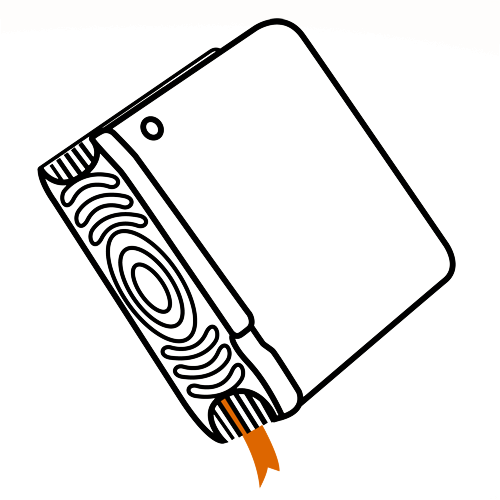
C&Rsenal releases their flagship series “Primer” every other week. It focuses on one firearm of the Great War at a time, in depth with animations, live fire demonstrations, and historical context! Our mission is to document and describe historical military small arms from across the world. We hope to share our love for all the attention that went into the design, development, manufacture, and issuance of these pieces.
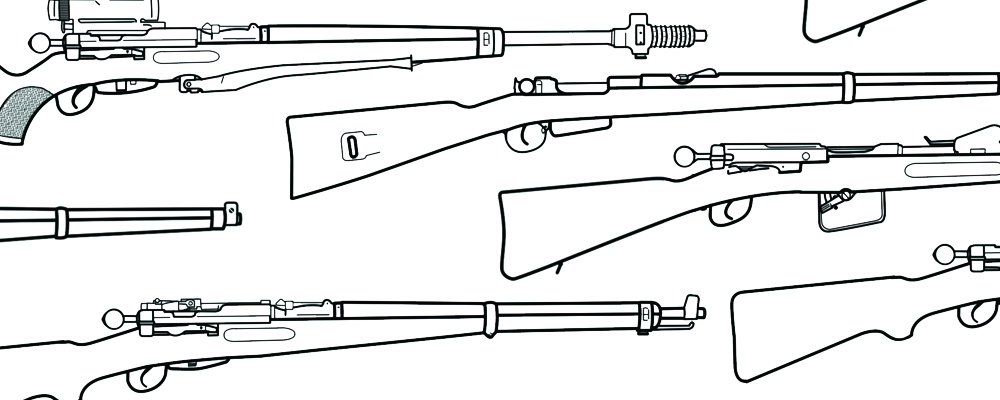


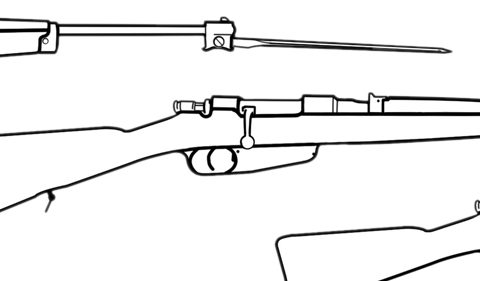
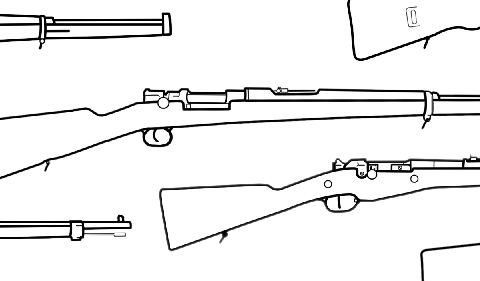
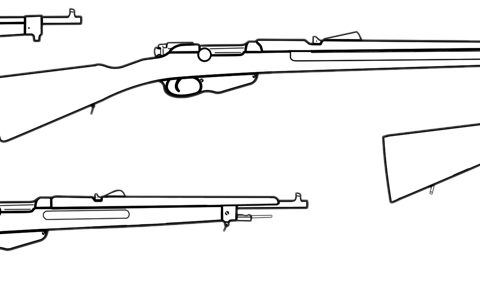
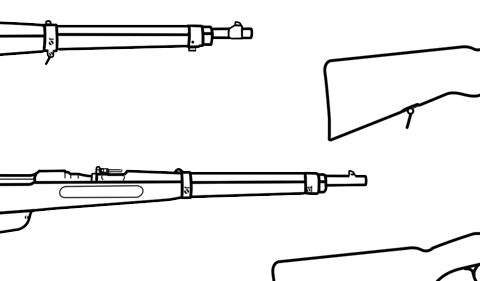
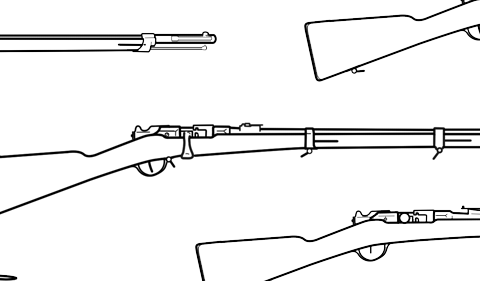
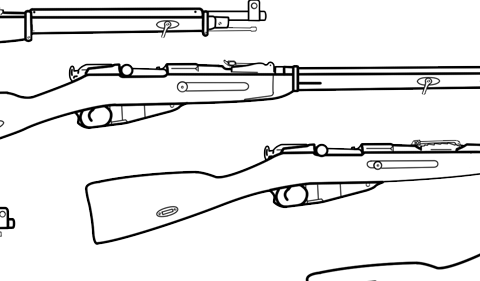
Specs listed under the outline drawing of the K31 are incorrect. Thank You.
Can you tell I was cloning the table and then updating it? Fixed! Thanks!
About how strong is the 1893 action? I found one for a good price and it is quite tempting. It is rather rough on the outside but the bore is excellent (my favorite kind of surplus firearm).
I’d like to add one to my collection if the price is good. The roughness is part of the provenance of surplus arms and should be preserved without molestation. I wouldn’t shoot one without downloading. Anything prior to the K31 should be treated like an antique.
question, are there any K11 carbines with beechwood? or are they all walnut?
I think they were all European walnut at that time. Walnut was pretty much soaked up by the Germans in WWII and after 45 its use was discontinued probably because of cost. I seen a really dark straight grain K31 that made me think it was imported black walnut.